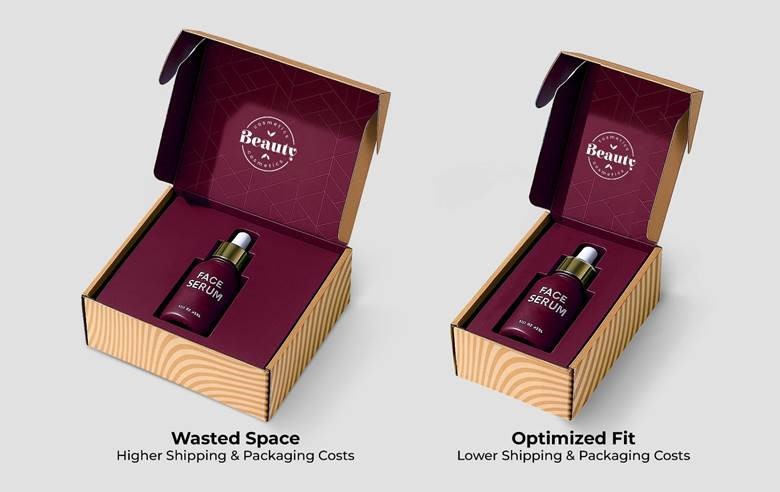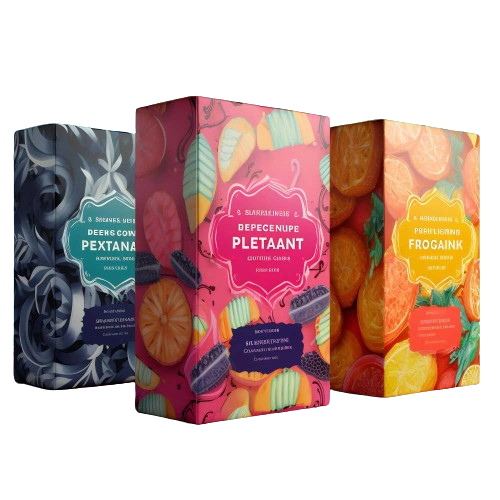How Optimized Packaging Helps You Save on Storage & Shipping Costs
Shrink your logistics costs by switching to custom-sized packaging. Learn how right-sized boxes reduce storage, shipping, and import expenses for growing businesses.

How Optimized Packaging Helps You Save on Storage & Shipping
In the current competitive market, shipping and import expenses are eating into profits faster than ever. A major factor behind this? Oversized, heavy, or poorly designed packaging. When packaging doesn’t fit the product or shipping method, it leads to higher freight bills, inflated storage costs, and increased duties based on dimensional weight. Product packaging, which was originally considered purely as a branding opportunity, has become a crucial component of operational efficiency.
By investing in smart, space-efficient custom packaging, businesses can dramatically reduce logistics-related costs. Optimizing packaging size and weight promptly lowers transportation and warehousing costs. It also helps navigate fluctuating tariffs and shipping regulations. In short, strategic packaging isn’t just about presentation; it is a cost-saving tool that protects your bottom line.
How to Reduce Product Costs by Optimizing Packaging Size and Weight
One of the most overlooked yet costly aspects of international shipping is the physical size and weight of your packaging. Major carriers, such as UPS, FedEx, and DHL, determine shipping charges based on either the actual weight or the dimensional weight, whichever is greater. Governments often follow similar logic, applying import duties that factor in both shipping cost and package volume.
Standard-size packaging is often not designed with the product in mind. Because standard-sized boxes are frequently too large, they have a lot of space that is filled with air pillows, bubble wrap, and other fillers. The package becomes heavier and larger than necessary due to the additional space, which raises shipping costs and even tariffs. To put it another way, companies are actually paying to ship air. Custom-sized packaging is designed to fit products snugly, cut down on dead space, which means fewer fillers, smaller dimensions, and lower costs. Brands can load more units onto a pallet or container, reducing the cost per item shipped. Even better, right-sized packaging helps avoid dimensional weight surcharges that can eat into profits when shipping at scale.
Besides size, the weight of the packaging matters too. Standard-sized boxes are often made with heavier materials or need extra layers and fillers to secure products that don’t fit properly. All that added weight quickly piles up, leading to higher shipping fees, extra handling charges in warehouses, and even steeper taxes.
How Custom Packaging Boosts Shipping Efficiency and Keeps Products Safe
The fact that custom packaging streamlines the shipping process is one of its key benefits. Your product will stack more evenly and use space in cartons, pallets, or shipping containers more efficiently if the boxes are made to fit it precisely. That means fewer awkward gaps, more efficient loading, and ultimately fewer shipments to move the same amount of product. This becomes especially valuable when freight costs are high or shipping space is at a premium.
But that’s not all: custom product packaging also does a better job of protecting your products. Standard-sized boxes frequently have too much wiggle room, so in order to keep things safe, you wind up packing them full of extra fillers like packing peanuts or bubble wrap. In addition to being wasteful, it adds needless weight and bulk. Your product will fit snugly and securely in a custom-made box, which frequently has inserts made to hold it firmly in place. Less movement in transit means fewer damaged items, fewer returns, and happier customers. Plus, you get to cut back on excess packaging materials, which is a win for both your budget and the planet.
How Brands Can Avoid Peak Season Shipping Penalties with Custom Packaging
Shipping cost varies throughout the year and can increase significantly during the busiest periods. Peak season surcharges are frequently applied by carriers such as UPS, FedEx, and DHL, particularly during holidays or times of high demand. These fees are typically tied to the size and weight of each shipment, meaning bulky or inefficient packaging can lead to a major increase in your logistics expenses just when your order volume is peaking.
Custom packaging helps brands stay ahead of these added costs. Tailored packaging guarantees that your shipments remain within carrier-imposed thresholds by eliminating extra space and superfluous weight. During peak months, smaller, lighter packages can save a lot of money because they are less likely to trigger high surcharge brackets. For businesses that rely on shipping large volumes, especially in Q4, this packaging efficiency translates into healthier margins and more competitive pricing.
Over time, even modest reductions in dimensional weight can add up. And when multiplied across hundreds or thousands of peak-season orders, those savings could mean the difference between a profitable holiday quarter and a margin squeeze.
How Custom-sized Packaging Improves Fulfillment Efficiency & Lowers Labor Costs
In a busy fulfillment environment, every second counts and so does every extra motion your packing team makes. Standard, oversized packaging often slows things down. Warehouse staff spend more time on tasks such as stuffing void fill, resizing boxes, or double-checking whether a product fits securely. These delays may seem minor, but over hundreds or thousands of orders, they drive up labor hours and inflate operational costs.
Custom-fit packaging solves this by simplifying the process. When a box is tailored to the product’s dimensions, packers can work faster with fewer steps, no excessive padding, no repacking, and no guesswork. Everything fits the first time. It speeds up the packing line, reduces material handling, and lets teams ship more orders with less effort. Over time, these improvements translate to lower labor costs, faster turnaround times, and better use of warehouse space. If you're scaling operations or dealing with high-volume fulfillment, custom packaging isn't just a design choice, it’s a performance upgrade.
|
Feature |
Standard Packaging |
Custom Packaging |
|---|---|---|
|
Box Size |
Generic, often oversized |
Precisely tailored to product dimensions |
|
Shipping Costs |
Higher due to wasted space and dimensional weight charges |
Lower costs by minimizing volume and optimizing weight |
|
Product Protection |
Requires excess fillers; items may shift and get damaged |
Secure fit; better product stability and reduced damage risk |
|
Material Usage |
More cardboard and fillers increase cost and waste |
Uses only what’s necessary, leaner, cleaner, more efficient |
|
Labor at Fulfillment |
Time-consuming packing process with more manual adjustments |
Streamlined packing process with faster turnaround and less effort |
|
Pallet & Container Utilization |
Fewer units per shipment; wasted logistics space |
Higher product density per pallet or container |
|
Environmental Impacts |
More waste; difficult to meet sustainability benchmarks |
Reduced waste; supports eco-friendly and recyclable goals |
|
Import & Duty Costs |
Inflated costs due to bulk and excess weight |
Lower import duties by minimizing box dimensions and weight |
Brands are improving both flexibility and appearance by investing in custom-fit packaging. Well-thought-out packaging options minimize excess weight, save shipping costs, and make compliance with changing international import regulations easier. By creating leaner, more efficient packaging systems now, your business will be better equipped to adapt quickly, protect margins, and scale sustainably, no matter how the logistics landscape shifts.






